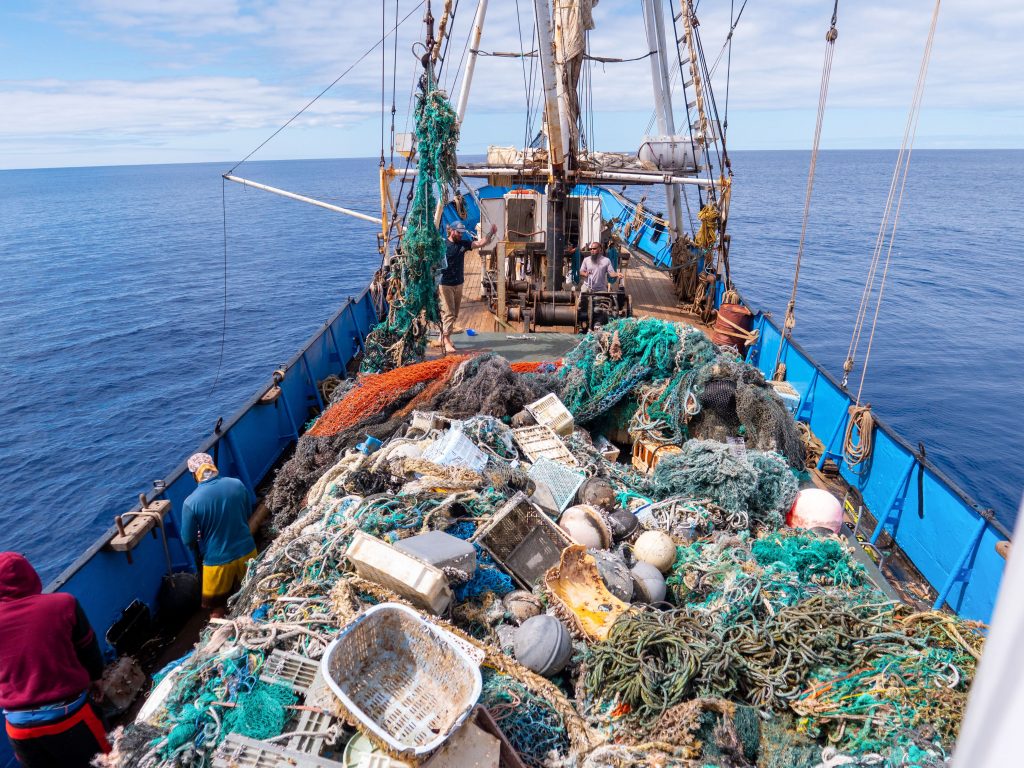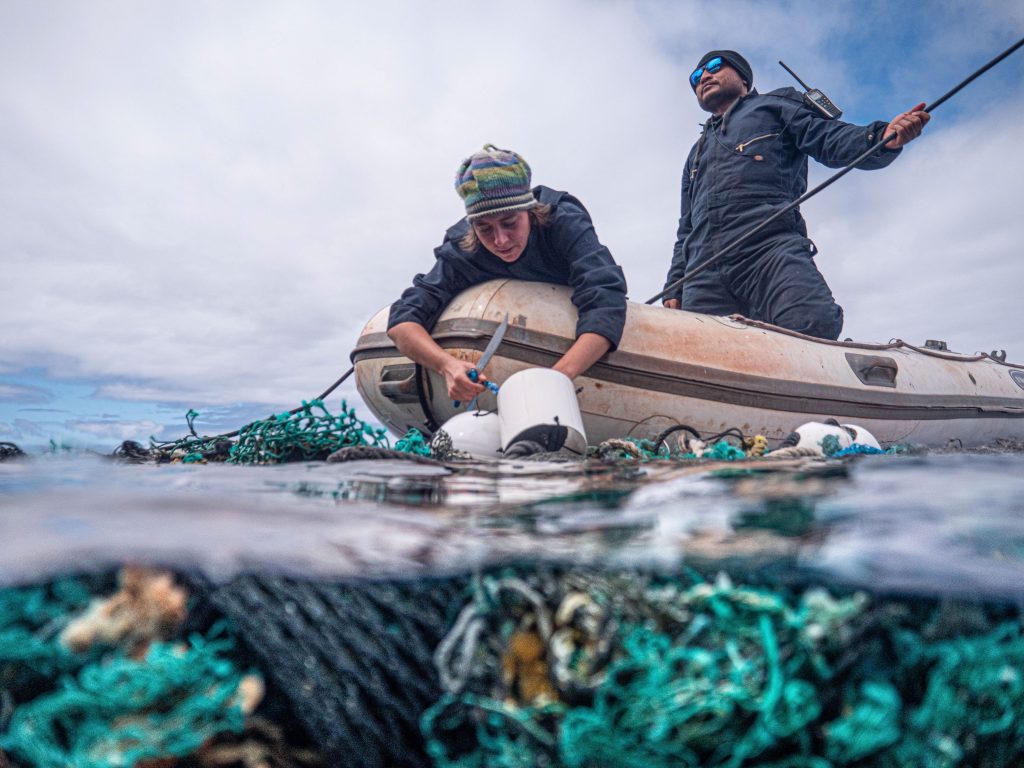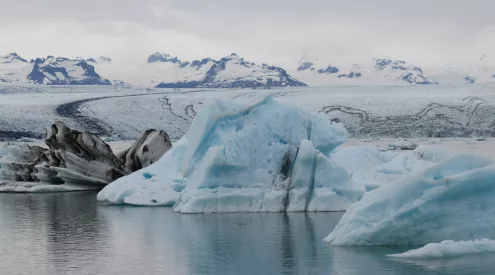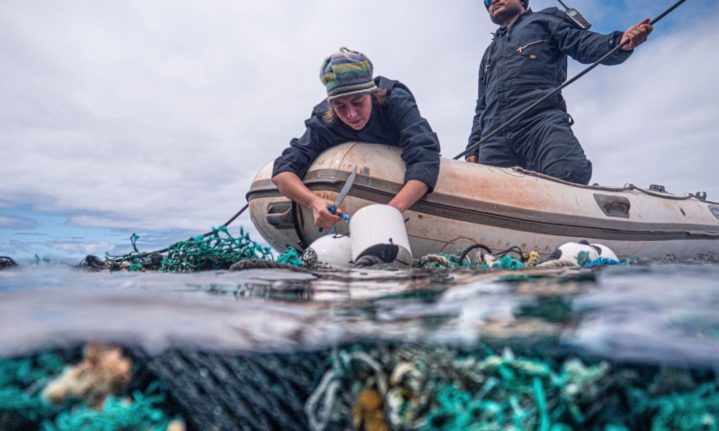In a win for ocean conservation, a crew from the Ocean Voyages Institute removed 103 tons of fishing nets and toxic plastic pollutants from the Great Pacific Garbage Patch.
The Great Pacific Garbage Patch or Pacific trash vortex is where plastic waste and other pollution accumulate in the North Pacific Ocean. The patch is divided into two sections: The Western Garbage Patch and the Eastern Garbage patch. Both are enclosed by the North Pacific Subtropical Gyre, according to National Geographic.
‘The Pacific Gyre, located halfway between Hawaii and California, is the largest area with the most plastic, of the five major open ocean plastic accumulation regions, or Gyres, in the world’s oceans,’ said Ocean Voyages Institute in a statement.
The clean up operation was no small feat, as the crew was at sea for 48 days. The mission began at the port of Hilo in Hawaii and ended in Honolulu. The crew also endured a three week quarantine period, according to Lonely Planet.
Ocean Voyages Institute set a new record with this expedition. The 103 tons collected makes this the largest at sea clean-up in the Gyre ever.
‘I am so proud of our hard working crew,’ says Mary Crowley, founder and executive director of Ocean Voyages Institute. ‘We exceeded our goal of capturing 100 tons of toxic consumer plastics and derelict ‘ghost’ nets, and in these challenging times, we are continuing to help restore the health of our ocean, which influences our own health and the health of the planet.’

Recovered nets and consumer plastic on the deck of S/V Kwai. Image credit: Ocean Voyages Institute
Crowley adds: ‘The oceans can’t wait for these nets and debris to break down into microplastics which impair the ocean’s ability to store carbon and toxify the fragile ocean food web.’
Crowley is known as known as the ‘Ghost Net Buster’ and has worked hard to develop effective removal methods that see tons of toxic plastic taken out the ocean. In 2019, Crowley and a team removed 48 tons of toxic plastics during two ocean clean-ups. The first was from the Gyre and the other from the waters surrounding the Hawaiian islands.
‘We are utilizing proven nautical equipment to effectively clean-up the oceans while innovating with new technologies,’ says Crowley.
‘Ocean Voyages Institute has been a leader in researching and accomplishing ocean clean-up for over a decade, granted with less fanfare and attention than others, but with passion and commitment and making meaningful impacts.’

S/V Kwai crew remove a GPS-enabled satellite tracker from a ghost net in the Gyre. Image credit: Ocean Voyages Institute
‘There is no cure-all solution to ocean clean-up: It is the long days at sea, with dedicated crew scanning the horizon, grappling nets, and retrieving huge amounts of trash, that makes it happen,’ said Locky MacLean, a former director at Sea Shepherd and ocean campaigner in marine conservation for two decades.
Crowley concluded that whales, dolphins, turtles and reefs are saved from so much waste.
‘There is no doubt in my mind that our work is making the oceans healthier for the planet and safer for marine wildlife, as these nets will never again entangle or harm a whale, dolphin, turtle or reefs.’



















